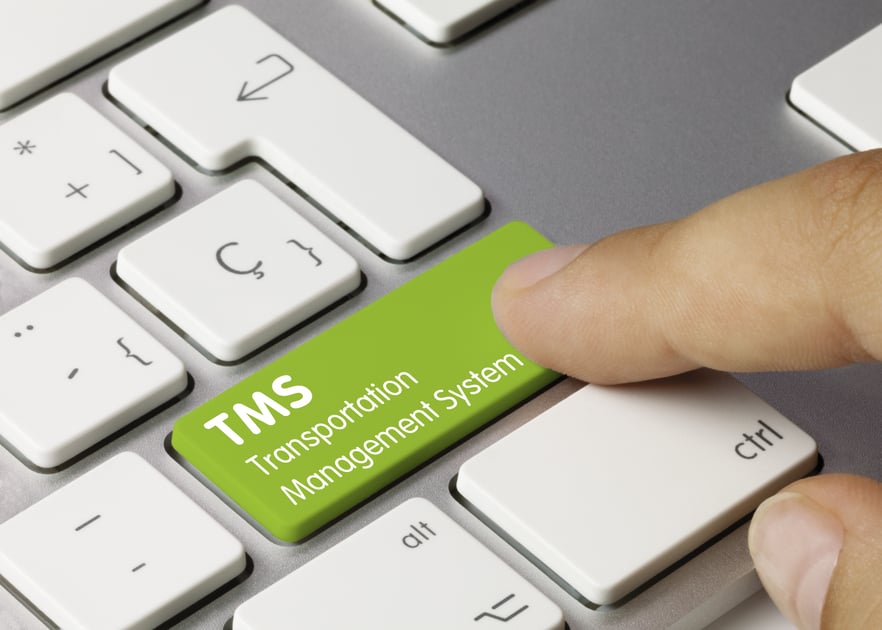
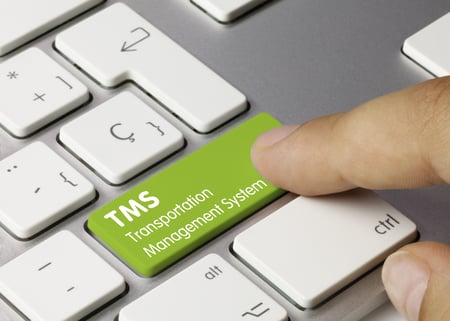 One of the very first questions a transportation management software (TMS) technology buyer needs to answer is: what type of architecture do they want to operate?
One of the very first questions a transportation management software (TMS) technology buyer needs to answer is: what type of architecture do they want to operate?
The importance of this question cannot be underestimated, as it drives cost, functionality and benefits.
Cloud TMS systems are getting the headline for their benefits, but under the right situation, so should a licensed TMS package.
However, for larger shippers there is a potential with some cloud-based TMS software solutions to have them price out like a licensed model.
The latter comment makes sense for the largest of shippers where their transaction count often makes them “cry uncle” on the transaction fee, but we will cover that in more detail below.
Until then, let’s walk through the types of transportation management software systems, then compare and contrast the total cost of ownership (TCO).
Cost of Transportation Management Software Summary
- Cloud TMS Price: Based on number of monthly shipment transactions the cost is $1.00 to $4.00 per freight load booked in the system.
- Licensed TMS Price: TMS buyers can expect to pay anywhere between $10,000 to $250,000 for the license, plus an annual maintenance fee that is typically a percentage of the initial license cost.
- Implementation & Support Costs: The cost to implement and support a transportation management system vary greatly, but one can assume the price will be less with a cloud TMS platform than a licensed TMS.
Types of Transportation Management Systems
To start, there are two TMS software technology architectures on the market today: SaaS and Licensed.
SaaS / Cloud-Based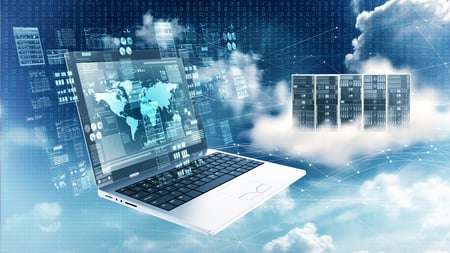
A SaaS system is also known as a Cloud-Based or Web-Based system.
A cloud-based TMS can either be a single or multi tenant system.
Under a multi tenant cloud structure, all users share the same technology within a single database. Each company’s users have their data tagged and protected, so others cannot access it.
In a multi tenant cloud, all customers have access to the same software functionality, as there is no customization available.
In a single tenant cloud structure, users have customization within the software to meet their requirements combined with the base software functionality. So, in a single tenant cloud there are multiple versions of the software and each customer has their own segmented database to operate their business.
An often missed aspect of a cloud platform is it can operate in its own private corporate network environment and not over a public cloud.
Licensed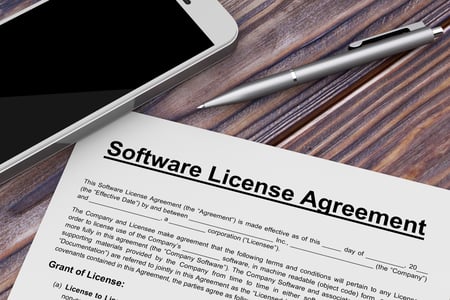
Licensed software is where a company buys the software license and operates it on its own network.
An option for licensed software is it could operate its software platform on a shared third party server. The reason a company may choose to go the hosted route is it helps bring down hardware costs, IT support resource needs, and it places the contingency and security in the hands of the “experts” that manage server networks as their core competency.
Comparing Cloud vs. Licensed TMS Architectures Cost Structures
IT Resources
Cloud
With a cloud TMS architecture, the buyer is paying only for what they are using on the platform and how much they are using it, while also outsourcing the IT team. There is no need to build an IT staff to support and manage servers, install new users, code and test new functionality, answer user questions, trouble-shoot, etc.
With a cloud TMS platform, the IT resource need is supplied by the software company. To add to it, quite often the TMS software provider has a recommended list of reseller and integrator partners to help keep the costs down even further when installing or integrating customers and carriers into the system.
Licensed
Under a TMS licensing agreement the TMS buyer will require an IT staff to install, optimize server performance, troubleshoot user issues, etc., etc. etc.
Winner: Cloud TMS Software
Hardware Requirement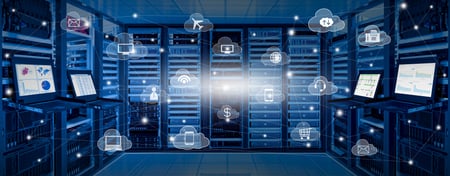
Cloud
The cost of the cloud TMS hardware is borne by the TMS software provider and is part of the fee structure. The TMS user only has to supply a web enabled device for its users, which would be a desktop or laptop in the office and a web enabled phone when on the road.
The cloud TMS software provider also has set up redundancy and security infrastructure.
Licensed
The buyer of a licensed TMS would either have to load the software on its network servers or hosted outsource solution where the software would reside on a shared network.
If on an outsourced server, it would be important to use a high speed fiber connection into your facility and have operators work on a stand alone device. We have seen too many times where a hosted licensed solution has slow response time speed issues if not set-up as previously suggested.
Either way, there is an additional cost to be considered when purchasing a licensed TMS software package.
Winner: Cloud TMS Software
Functionality
Cloud
Initially, cloud TMS software was fairly simplistic, but that is no longer the situation in today’s market. Some of the highest ranked systems in the annual Gartner TMS Magic Quadrant Rankings are cloud based software packages, which is the listing all software solutions try to find themselves on each year because of its arm length review of capabilities, strengths, and shortcomings.
Later in this article, we will talk about functionality and the pricing strategy some cloud TMS software suppliers are using in the market to grab market share.
Licensed
Licensed software has been the staple in the industry for years and often where many companies fall back on because of familiarity.
The issue is just because a TMS is licensed does not mean it comes with more functionality. Typically, a buyer gets what they pay for, meaning there are plenty of low cost, low functionality and high cost, high functionality licensed systems.
Winner: Depends on the TMS Chosen.
Buyers need to evaluate the functionality value proposition against the cost. Our experience has been the “right” cloud system will be less expensive when comparing comparable functionality.
Upgrades
Cloud
The upgrades of a cloud TMS come as part of the fee structure.
The upgrades are tested and optimized in the cloud TMS infrastructure before rolled out to their user community. This makes for a smooth and quick installation giving users access to the new functionality quickly.
Licensed
The TMS buyer pays for the upgrades. If the upgrades are not required, the TMS buyer can always opt out of each version upgrade to cut down costs to purchase the next upgrade and to install and test the new version.
The downside is the TMS buyer will be behind on the upgrades, which will cause it to lose out on the newest functional features and can make future installs more difficult.
The cost of installing the upgrades can become timely and costly because the software performance will have to be tested and optimized to meet the buyer’s individual environment.
Winner: Cloud TMS Software
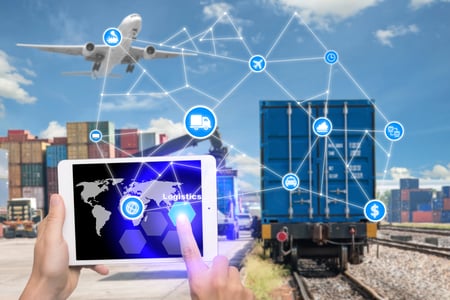 Connectivity & Collaboration
Connectivity & Collaboration
Cloud
By its nature, a cloud TMS has far better connectivity and collaboration abilities coming out of the box, as it has already been integrated with several other systems from prior installations.
An example of a TMS we are deeply familiar with, because of our certified MercuryGate TMS integrator status, the MercuryGate TMS cloud platform has connections into 50 top tier logistics platforms for its users coming out of the box.
Also, with over 450,000 users logging into the system every day can assure new buyers that they also have a number of connections into key motor carriers and brokers that can be quickly turned on without extensive code writing and testing.
Licensed
Each licensed system is a green field, meaning every connection will have to be established and tested.
This is not to say a licensed system cannot bring the connections online, but to say it will be more cost and time intensive.
Winner: Cloud TMS
Mobile
Cloud
Mobility is an easy answer for the mobility question because any web enabled phone can operate the TMS software.
Licensed
The mobility question is not an easy one to answer for a licensed TMS. Many already have it built in, but the full functionality that is available when operating remotely depends.
User may even find response times are not the same when working outside the office, which is not a question a cloud TMS has to struggle to answer.
Winner: Depends on the TMS Chosen.
Security
Logistics companies are being targeted by various entities trying to capture data, take their system down or demand a ransom, so this is definitely not an area a company should take lightly.
Cloud
The cost of security is borne by the TMS software vendor and this is their expertise. There is no need for the buyer to set-up a hot site, back-up process, and put in extensive cyber security software.
Licensed
Unlike a cloud TMS, the buyer is responsible for the hot site, back-up and cyber security software and it still may not be enough.
Winner: Depends on the TMS Buyer’s IT Capabilities and Budget
Scalability
Cloud
A cloud TMS can easily scale, as the system design is set up to do so easily, whether a single or multi tenant cloud system.
Think of it this way: a cloud TMS architecture is being scaled every day as new customers come onboard or as current customers grow their business. For cloud-based TMS, scale is in the DNA of the architecture.
Further, a cloud TMS typically allows customer to scale up on functionality, which is usually required when the business grows. This feature of a cloud also helps a company scale economically.
Licensed
Scalability is not as easily done as it is said. Often,scale involves new hardware or infrastructure because the previous server may not be able to take the additional volume.
Also, a licensed TMS requires the buyer to buy the license in a more a take it or leave it approach to functionality, meaning the buyer of a licensed TMS is required to buy all functionality at one time and choose what parts of the system it wants to “turn on”.
Winner: Cloud TMS Software
Fee Structure
Cloud
With a cloud TMS, the buyer pays only for what they use of the system. This means two things:
- The more shipment transactions, the higher the expense, although the per transaction fee decreases with volume.
- The more system functionality required, the higher the transaction fee will be. As a reminder we will talk about the “free TMS” shortly.
Typically, the fee structure is per transaction or a monthly subscription fee that is based on the range of shipments expected to move in the system every month.
A good “rule of thumb” for a top tier cloud TMS is anywhere from $1.00 to $4.00 a shipment. This fee is dependent on the total number of shipments moved a month.
Know that if your company is an extremely high volume shipper that the rate can be a fixed fee that will take the rate per transaction even lower.
Licensed
TMS buyer pays an upfront license fee, plus an annual maintenance fee.
The cost of a licensed TMS can be as low as $10,000, plus an annual maintenance fee or as high as $250,000, plus a maintenance fee.
Winner: Cloud TMS Software, Particularly Viewed on Value per Functional Feature
 Implementation Timeline
Implementation Timeline
Cloud
A cloud TMS is typically extremely easy and fairly quick, as the system architecture has been proven across its entire user-base. An implementation for some start-ups can be completed in a month with more extensive start-ups taking 6 months.
A cloud TMS also helps to avoid some of the typical pitfalls of implementing a TMS.
All-in, the average install is roughly two to three months tops.
Licensed
Typically a licensed piece of software takes longer to implement and requires a great deal of upfront planning to ensure a good install. The reason is each install is a greenfield start-up, meaning everything is required to be set-up out of the box from functionality to connectivity.
Since each instance is placed on different physical servers, there are often optimization and testing required to optimize the performance and user experience.
Winner: Cloud TMS Software
Implementation Cost
Cloud
The implementation costs associated with a cloud TMS is typically less expensive than with a licensed TMS.
The reason being is a cloud TMS is packaged in a way that allows each install to be somewhat repetitive in nature making the process more of a configuration exercise to meet the TMS buyer’s requirements.
In addition to the set-up process, the connectivity is often simplified because the connections with other logistics software platforms and freight carriers have already been established making the integrations far less complex than is often found with a licensed piece of software.
Licensed
The cost curve for a licensed TMS is typically more significant because each installation is green field installation, meaning each installation is a brand new set-up starting with loading the software on the server before even getting to configuration and connectivity.
Winner: Cloud TMS Software
 Return on Investment (ROI)
Return on Investment (ROI)
Winner: Cloud TMS for all the reasons listed in the above categories.
The #1 Pitfall to Avoid in Buying a TMS When Evaluating TMS Software ROI
An item to consider when comparing the cost of a cloud TMS and licensed TMS is the cost per transaction. This simple calculation can be a trap if not thoroughly thought through in the TMS buying decision process, so let’s take a look at it together.
A cloud TMS has a fixed cost per transaction that is based on the total number of shipments made in a month. Typically the pricing is on a sliding scale that has a transaction cost that decreases as volume increases. The sliding scale helps in the ROI and cost of ownership calculations, but often cause TMS buyers to freeze because they look out several years and see a number in a spreadsheet that is greater than a licensed TMS.
(One of the reasons for this blog was to identify all the cost components, so one does not run off by the total cost of a cloud TMS on an Excel Spreadsheet. A buyer needs to remember the additional costs discussed above are not included in a licensed TMS and therefore needed to be added for an apples-to-apples comparison. Recall the added costs include: IT support team, hardware, infrastructure, upgrades, etc.)
On the other side of the equation is a licensed TMS with an upfront fixed charge, plus an annual maintenance fee. The result of this pricing is a licensed TMS has a heavy upfront investment.
The cost per transaction of a licensed TMS does improve over time, but initially it is extremely expensive and the point to where it appears favorable to a cloud TMS takes longer than one ever expects because the annual maintenance fee keeps being added and the support structure required to keep operating the software platform.
Often, particularly for start-ups and other fast growing companies, the cost per transaction for a licensed software solution never becomes favorable to a top tier cloud TMS because the license software becomes obsolete against the company’s requirements. The reason for this is the buyers under bought the technology coming out of the gate.
Under buying technology and / or aligning with a TMS software company that cannot keep up with the required investment to hold steady or outpace the competition in regards to functionality is by far the biggest mistake a buyer of a TMS can make.
The reason being is not only does the TMS buyer jeopardize its competitive advantage, but it is also forced to purchase another TMS package that brings with it another round of implementation costs and risks.
The conclusion is to not under buy technology. It is a costly mistake.
 “Free” Transportation Management System Versus Paid TMS Systems
“Free” Transportation Management System Versus Paid TMS Systems
With the advent of the cloud-based transportation management systems, the market has also found a way to deliver a “free” TMS.
As your parents and grandparents have probably told you, nothing in this world is free, and the “free” TMS is another example of this.
Clearly there is a time and place for this pricing for some smaller companies, as free TMS systems continue to hit the market, although we have talked with plenty of these buyers wanting more after missing some of the keys that are now causing buyers remorse.
What we will cover in the next few paragraphs are things buyers of a free TMS need to be aware of, so they go in with eyes wide open when they sign up for a free TMS.
The free TMS is a pricing strategy used by cloud TMS providers as a teaser to get their foot into a business, then expand with the buyer into a paid subscription. The free TMS also requires the buyer to utilize their load board platform, as it is the method by which it can profit from the lack of transaction user fees of its platform.
These free TMS platforms try to bring transparency on pricing by including a page on their website that is three to five columns where the columns are labeled something like FREE, PRO and Enterprise with rows listing functionality and check marks telling the reader what is included in each. Buyers need to take full note of what is included on each check mark to ensure they are getting what they expect and know when their business will be required to move up the enterprise chain.
As part of the free TMS software, users are tied into the TMS provider’s load board where the users will quote their spot rates within them. These free TMS platforms put on the appearance of transparency on their freight board pricing by including the carriers and the price, but the reality is this is where free becomes paid and “free”-dom becomes locked in.
From the perspective of free, the internal load board is where the free TMS makes its money because it puts a profit on each load that is higher than what a company can quite often get on the open market themselves, particularly when the cost of a paid cloud TMS is fairly minimal, as was described earlier in the article.
From the perspective of freedom, the shipper using the TMS cannot go outside of the TMS software options to bring in its own motor carrier relationships because it is not allowed under the “free” TMS plan.
Conclusion
As logistics and supply chain strategies expand and we rely on more transparency and fluidity, the key connectivity is paramount and there is no better platform to accomplish connectivity than through a cloud based architecture.
We would love to be part of the conversation the next time your company is looking for a TMS to operate its logistics and supply chain strategies. While we are a bit biased to the MercuryGate cloud TMS platform that we are a certified reseller and integrator, we do feel that MG can be the last TMS your company would need to buy. As a certified MG reseller and integrator, we can help you through the process from start to finish.
If you are just starting your buying journey, we invite you to download a free TMS RFP template that will help in assembling the requirements document.
If you're ready to take the next step, at InTek Freight & Logistics, we can help. Just tell us what you need and we'll discuss how our expertise can help with the unique shipping challenges your business faces. Rather do a bit more research first? View our Freight Guides for comprehensive articles and eBooks on all things freight and logistics.
Get Updates
Featured Articles
Categories
- Freight & Shipping Costs (53)
- Freight Broker (58)
- Freight Forwarder (2)
- Intermodal Transportation (181)
- International & Cross Border Logistics (43)
- Logistics & Supply Chain (414)
- Logistics Service Provider (76)
- LTL (39)
- Managed TMS (49)
- News (38)
- Supply Chain Sustainability (12)
- Transportation Management System (37)
- Truckload (121)
- Warehousing & Distribution (49)






